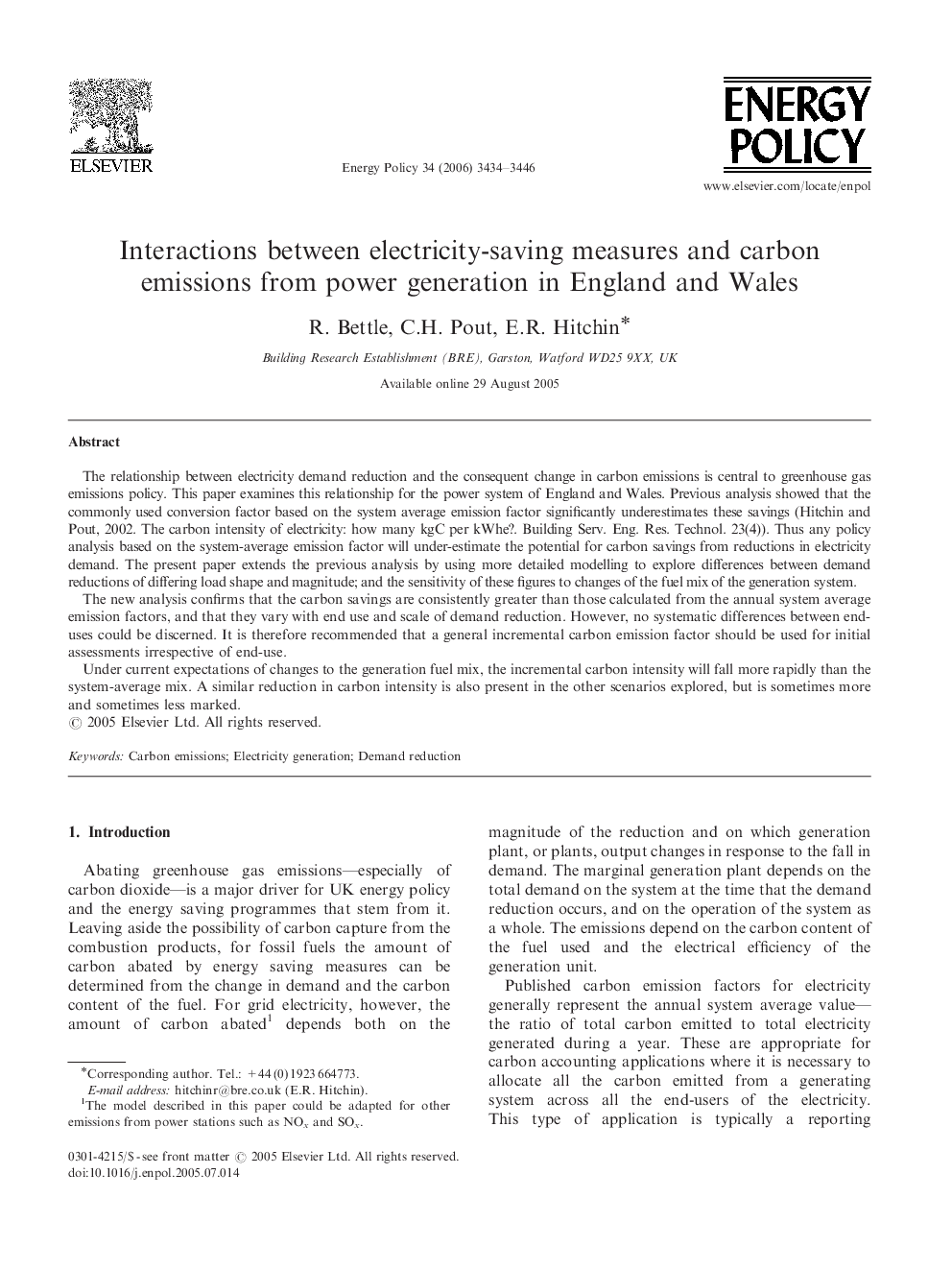| Article ID | Journal | Published Year | Pages | File Type |
|---|---|---|---|---|
| 996826 | Energy Policy | 2006 | 13 Pages |
The relationship between electricity demand reduction and the consequent change in carbon emissions is central to greenhouse gas emissions policy. This paper examines this relationship for the power system of England and Wales. Previous analysis showed that the commonly used conversion factor based on the system average emission factor significantly underestimates these savings (Hitchin and Pout, 2002. The carbon intensity of electricity: how many kgC per kWhe?. Building Serv. Eng. Res. Technol. 23(4)). Thus any policy analysis based on the system-average emission factor will under-estimate the potential for carbon savings from reductions in electricity demand. The present paper extends the previous analysis by using more detailed modelling to explore differences between demand reductions of differing load shape and magnitude; and the sensitivity of these figures to changes of the fuel mix of the generation system.The new analysis confirms that the carbon savings are consistently greater than those calculated from the annual system average emission factors, and that they vary with end use and scale of demand reduction. However, no systematic differences between end-uses could be discerned. It is therefore recommended that a general incremental carbon emission factor should be used for initial assessments irrespective of end-use.Under current expectations of changes to the generation fuel mix, the incremental carbon intensity will fall more rapidly than the system-average mix. A similar reduction in carbon intensity is also present in the other scenarios explored, but is sometimes more and sometimes less marked.
